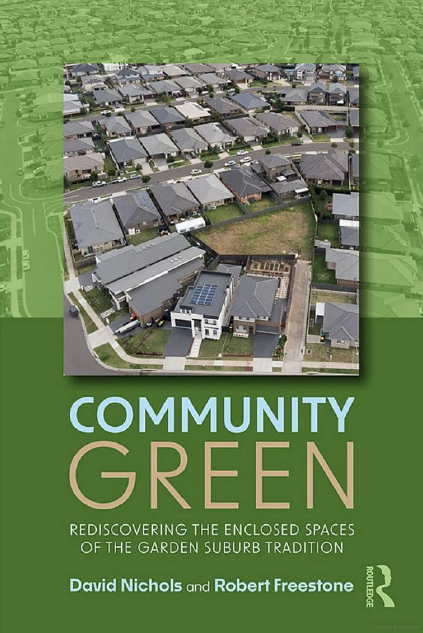Neighbourhood open space in suburban liveability
[Review of the book Community Green: Rediscovering the Enclosed Spaces of the Garden Suburb Tradition, by David Nichols and Robert Freestone]
DOI:
https://doi.org/10.34900/lr.v20i2.1253Keywords:
book review, community green, neighbourhood open space, suburban liveabilityAbstract
This encyclopaedic work by Nichols and Freestone is the result of extensive thinking, international review and research over several years. As the succinct preface page indicates, neighbourhood open space ranks highly as a key component in suburban liveability assessments. In this context, the book connects the past, present and future of planning specifically for small internal open spaces. It resuscitates the enclosed, almost secretive reserve from history as a distinctive form of local open space whose problems and potentialities are relevant to many other green community spaces. This then opens up wider connections between localism and globalism, the past and the future, and connects to broader global challenges of cohesion, health, food and climate change.
Downloads

Downloads
Published
How to Cite
Issue
Section
License
Copyright (c) 2024 Ken Taylor

This work is licensed under a Creative Commons Attribution 4.0 International License.
Authors who publish with this journal agree to the following terms:- Authors retain copyright and grant the journal right of first publication with the work simultaneously licensed under a Creative Commons Attribution License that allows others to share the work with an acknowledgement of the work's authorship and initial publication in this journal.
- Authors are able to enter into separate, additional contractual arrangements for the non-exclusive distribution of the journal's published version of the work (e.g., post it to an institutional repository or publish it in a book), with an acknowledgement of its initial publication in this journal.
- Authors are permitted and encouraged to post their work online (e.g., in institutional repositories or on their website) prior to and during the submission process, as it can lead to productive exchanges, as well as earlier and greater citation of published work (See The Effect of Open Access).


